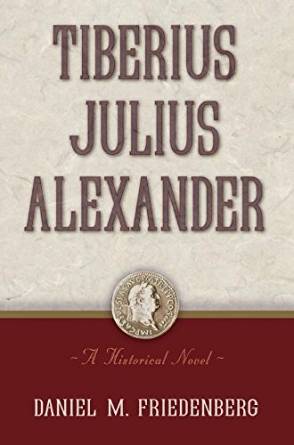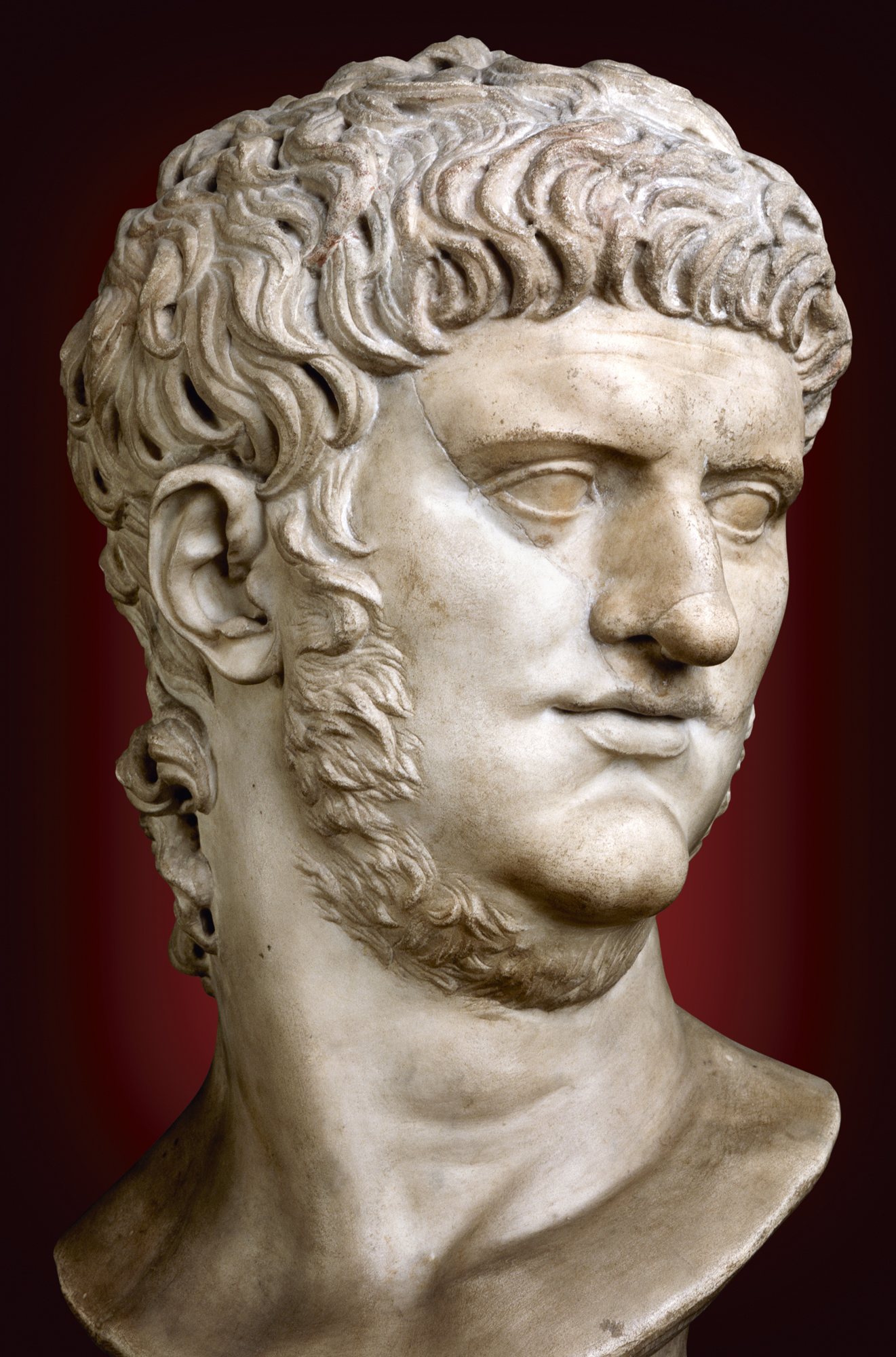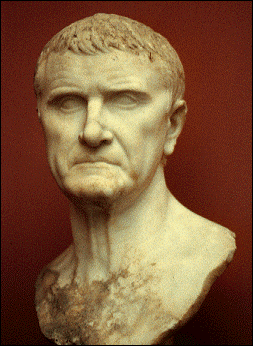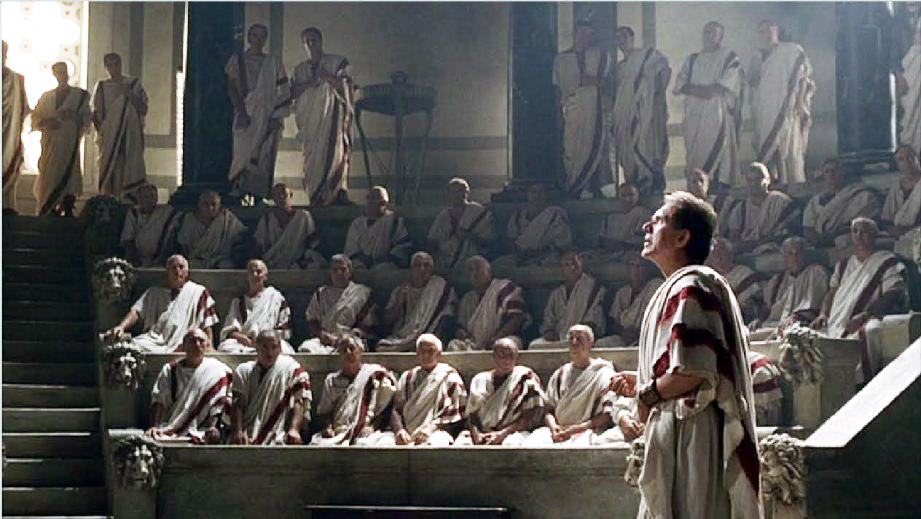The return of Quetzalcoatl
If until recently westerners represented the zenith of civilization in the world, presently New Guineans and the headhunters of Munduruku in Brazil represent the nadir. The psychoclass of the poorest strata of Latin America lies at the middle of both extremes.
In contrast to most nations, Mexico City gave her name to the modern country. It was founded by the Tenochcas when a voice ordered them to establish themselves on the lake that they had arrived, “as the unembodied bicameral voices led Moses zigzagging across the Sinai desert.” It cannot be more symbolic that the Coat of Arms of Mexico, which they so much shoved under my nose at school, is an eagle perched upon a prickly pear cactus devouring a snake in one of the lake islets that the ancient Tenochcas recognized. It was an odd place to found a city, but the punishing voices had to be obeyed. We can deduce from The Origin of Consciousness in the Breakdown of the Bicameral Mind that the buildings erected at the center of a community, such as the temple of Huitzilopochtli on the Texcoco Lake, were located where the guides listened the damned voices. (The etymology of the island of Mexico on the lake would be “navel of the maguey” or “of the Moon.”) If we now relate not only Jaynes to Arieti but also a passage of my first book about a patient diagnosed with schizophrenia, the puzzle starts to take shape. I have in mind a woman [Maya Abbott] that, because her parents always tried to think for her, suffered from auditory hallucinations and confessed to Laing: “I don’t think, the voices think.” Unlike this sort of psychological analyzing—God forbid!—, some historians try to make amends for the pre-Columbian Indians. More disturbing is to see a friend taking offence about our compassion. The psychoanalyst Jenny Pavisic once addressed me severely: “And who are you to condemn the sacrifices?” referring to child sacrifices in Mesoamerica.
The Tlatelolcan ceremonial show-ground and its surrounding neighborhoods have been excavated for archeological purposes. I have seen photographs of bone fragments of 41 sacrificed victims in the excavation of the terraces of the Ehecatl-Quetzalcoatl temple, of which 30 were little children. Just as Pavisic, many people are capable of condemning the 1968 massacre of students in Tlatelolco, but never the child sacrifices perpetrated exactly on the same place. In April of 2007 bones were found of twenty-four sacrificed children to Tláloc in Tula, the capital of the Toltec civilization, dated 950-1150 AD according to a newspaper report that circulated the world. The children had been decapitated. If we remember that the intention was to avert an environmental crisis in that way, it should not surprise us that Mesoamerican civilizations disappeared even before the conquest. The sacrifices represented the distaff that moved the fabric of that culture, and a society as psychologically dissociated that had sacrifices on its basis was condemned to random disappearance. It is as if a civilization was composed of the self-harming women in the Colin Ross clinic and of male serial killers.
The iconic example of civilization disappearance is the abandonment by the Mesoamericans of their great cities, as is the case of the Mayas of the ninth century AD. From the climatic register, ice analysis in Greenland and mud of the subsoil of a lagoon in Maya areas it can be deduced that they suffered a serious draught. To deal with the draughts, just as their Mexica successors sacrificed the flower of their youth in face of external crises, from the bone register of about thirty sacrificed men, women and children it is deduced that the Mayas tried to appease the gods that had betrayed them. Had they arrived to the level of Aristotelian thought they would not have attempted to solve the problem by killing even more of their folk, and hardly would the draughts had been so apocalyptic for their civilization. Let us not forget that sudden desertion of the cities also occurred in Teotihuacan and Tula. Julian Jaynes comments:
I also think that the curious inhospitable sites on which Maya cities were often built and their sudden appearance and disappearance [my emphasis] can best be explained on the basis that such sites and movements were commanded by hallucinations which in certain periods could be not only irrational but downright punishing.
The whys of the periodic collapse of the Mesoamerican civilizations starts to be discerned if we consider that the demographic load of a prosperous Indian city sooner or later enters a critical phase that confronts the bicameral Diktat of the dominant theocracy. It is illustrative that when Egypt suffered a draught around 2100 B.C. absolutely all authority collapsed: the Egyptian people fled the towns and the literary sources of the time remind me the apocalyptic passages of a synoptic gospel. While Egyptologists struggle to explain the “why,” Jaynes compares it with the Maya catastrophe. The Mayas suffered a massive civilizational regression by going back to the jungle. He also compares it with the collapse of Assyria in 1700 B.C. that lasted two hundred years and that no historian quite understands. Jaynes also argues that the mystery is dissipated if we see it as a psychogenic leap. The bicameral societies are more susceptible to collapse once the gods refuse to talk; this is to say, once man overcomes his schizophrenic stage, so overwhelmed with auditory hallucinations. The collapse of the bicameral society is but the resulting chaos of the transit to consciousness. In Egypt, Assyria and other cultures of the Ancient World the birth of a schizoid psychoclass out of a schizophrenic one (Laing magnificently describes the difference between schizoid and schizophrenic in The Divided Self) represented a formidable threat for the status quo. “Disorders and social chaos had of course happened before,” writes Jaynes, “but such a premeditated mutiny and parricide of a king is impossible to imagine in the god-obedient hierarchies of the bicameral age.”
Political correctness
The rupture of the bicameral age resulted in the greatest collision of consciousness that a society could endure. But unlike the people in the Old World, those in the New World were incapable of carrying out such intrapsychic metamorphosis. The reading of Jaynes’ book seems to suggest that the Mesoamerican world of the sixteenth-century still was bicameralized in a way that had already been overcome at the other side of the ocean. In other words, the Mesoamericans suffered from the stagnation that in psychohistory is called psychogenic arrest.
The Amerindians got what they deserved. But presently, who condemns the ancient dwellers of the Americas? In a politically correct world it cannot be said that the infanticidal pre-Hispanics were psychologically dissociated; that the military theocracy was composed of serial killers, or that they were morally inferior to us. But the moralists were not always muzzled. In the colorful Spanish of his time, Bernal wrote a chapter, “How the Indians of all New Spain had many Sacrifices and Clumsiness that We Took Them Away and Imposed on Them the Saintly Things of Good Doctrine.” Bernal’s cheekiness does not cease to fascinate me: and it is pathetic that, half a millennium later, compared to those soldiers the historians, ethnologists and anthropologists of today have psychogenically regressed. I will illustrate it with the other pre-Hispanic empire.
Communication between Mesoamericans and the Andean people was sporadic. Just as the Mayas, the Incas deformed the craniums of the babies; some scholars believe to demarcate different ethnic groups of the Inca empire. The torments on childhood started since the first day. The newborn was washed with cold water, covered and placed in a hole made in the ground that would be used as a simple playpen. At five the child was nationalized by a theocratic state that, like the Mexica, was governed by strict hierarchies. And just as in Mesoamerica, the ritual murder of children was carried out in several Andean societies.
In November of 1999 National Geographic published an article with several photographs of mummies perfectly preserved at 6,700 meters above the sea level: the highest archaeological site of the world. Those were children that had been voluntarily given by their parents to be killed: an eight-year-old boy and two girls. “The Inca,” says the article, “obtained children from throughout the empire [for sacrifice] and rewarded their families with positions or goods.” In some cases the parents themselves accompanied the child in her journey to immolation. In conjunction with other barbaric forms of childrearing, the practice formed the bicameral minds that would be an all-too-easy prey for Pizarro (who in Spain had been a swineherd). The chroniclers wrote about those sacrifices. Nevertheless, with the perennial excuse that “Winners write history” in some Latin American circles the myth was created that the chroniclers’ stories were mythical. The discovery of the mummies by the end of the century confirmed the authenticity of the Spanish stories that the children were buried alive, or killed by a blow to the head, which is how according to the autopsy they killed one of the girls.
However, just as Bolivian nationalists such as Pavisic angrily ask “And who are you to condemn the sacrifices?,” the National Geographic article is a disgrace. The author, Johan Reinhard, is afraid to judge the parents and the society that produced them. He idealizes them in the most servile way, thus betraying the memory of the children. Reinhard wrote overt falsehoods about the Amerindians, for example, “the Inca were not the brutal conquerors the Spaniards were.” He writes that on the same page in which he asserted that the Inca rewarded the parents who offered their children for sacrifice. Reinhard also wrote, euphemistically, “right after she died” referring to one of the sacrificed girls instead of the natural “right after they killed her.” And when he mentions that the chroniclers reported that others were buried alive, he hastened to add: “The Llullaillaco children, however, have benign expressions.” More offensive are the photograph headings at the beginning and the end of the article: “Go Gently” referring to the pubescent girl that was found in fetal position buried in a hole, and “Eternity Bound” referring to the sacrifice of the three children in general. And the fact that the sacrificial site was found at the top of the mountain makes Reinhard exclaim: “The conditions only increased my respect for what the Inca had accomplished.”
In the next chapter I will approach the subject of the intellectual aberration known as cultural relativism, of which Reinhard and many other academics are distinguished exponents. Suffice it to say that the ethnologists and anthropologists are a lost cause. Our only hope lies in that another generation replaces those who presently occupy academic chairs. How I wish that the younger minds learned something about psychohistory; for example, that they became interested in the greatest adventure of the world by reading the Bernal Díaz story up to the arrival of the Spaniards to Tenochtitlan.
And I must tell how in this town of Tlaxcala we found wooden houses furnished with gratins, full of Indian men and women imprisoned in them, being fed up until they were fat enough to be sacrificed and eaten. The prisons we broke open and destroyed and set free the prisoners who were in them, and these poor Indians did not dare to go to any direction, only to stay there with us and thus escape with their lives. From now on, in all the towns that we entered, the first thing our Captain ordered us was to break open these prisons and set free the prisoners.
These prisons are common throughout the land and when Cortés and all of us saw such great cruelty he was very angry with the Caciques of Tlaxcala, and they promised that from that time forth they would not eat and kill any more Indians in that way. I said of what benefit were all those promises, for as soon as we turned our heads they would commit the same cruelties. And let us leave it like that and tell how we were ordered to go to Mexico.
The indigenistas are dishonest people. In the book Toltecayotl Miguel León Portilla accepts that indigenous families usually abuse contemporary Indian women. But in that book León Portilla blames, incredibly, the Conquest for the current abuses by the male Indian to the female Indian. He then writes that “the situation of the pre-Hispanic Nahua woman highly differed from his condition today,” and to support his claim a few pages later he quotes a passage from those Nahua homiletics that León Portilla is so fond: “The little girl: little creature, little lovebird, oh so little, so tender, so well fed…” But in the same Toltecayotl chapter León Portilla also published an illustration of the Codex Telleriano-Remensis of a Mexica housewife that looks anything but happy. In absolute contrast to León Portilla, the Anonymous Conqueror wrote that there were no people in the world who had women in less esteem than the Mesoamericans. And in his most recent book, The Origins of War in Child Abuse, deMause wrote: “Aztec females were treated even worse than Islamic females.” It is indeed preposterous that the Spanish soldiers of the sixteenth century manifested better empathy for the victims of that culture than the scholars of today. But to understand the mestizo León Portilla it is pertinent to note that in Apologética Historia, written at the middle of the sixteenth century, Las Casas praised the Indian reprimands of parents to their children by calling them “sane, prudent and rational.” Las Casas even located such poisonous pedagogy above the teachings of Plato, Socrates, Pythagoras and even Aristotle.
The most recent treatise about the encounter between the Spanish and Mexican empires is Conquest: Montezuma, Cortés and the Fall of Old Mexico by Hugh Thomas. It catches the attention that, as a typical bienpensant, in the preface’s first paragraph Thomas candidly talks about the members of the two cultures without realizing that they belong to very distinct psychoclasses. On the next page Thomas writes about “compassion” as one of the virtues of the Mexica in spite of the fact that on the next line he sates that even the babies in arms were made to cry with brutality before sacrificing them! As to the treatment of women Thomas writes, dishonestly, that their position was at lest as comparable to the female Europeans of that age, although we perfectly know that European women were not deceived to be sacrificed, decapitated and skinned punctually according to rituals of the Aztec calendar. And the women who would not be sacrificed were not allowed to wear sandals, unlike their husbands. In the codexes the Indian females appear generally on their knees while the males are on sitting facilities (This reminds me that when visiting Chiapas in his youth, it shocked my father that Indian women wore obscure clothing: their humblest figures could not contrast more with the very colorful garments of the male Indians.) And we must remember the Indian costume of selling, and even giving as presents, their daughters. The same Malinali, later called equivocally Marina or “La Malinche,” Cortés’ right hand, had been sold by her mother to some traders from Xicallanco, who in turn had sold her to some Mayas who sold her to some Chontales, who offered her as a present to Cortés. Thomas even takes as historical the words of the chronicler in regard to Xicoténcatl II’s delegation when, after Xicoténcatl’s people suffered crushing defeats, he went into the Spanish camp with words that portray the treatment of the Indian woman by their own: “And if you want sacrifices, take these four women that you may sacrifice, and you can eat their flesh and their hearts. Since we don’t know how you do it we have not sacrificed them before you.” The study of Salvador de Madariaga about the conquest, published under the title Hernán Cortés (Macmillan, NY, 1941), precedes half a century Thomas’ study. Without the ominous clouds of cultural relativism that cover the skies of our times, in Madariaga’s study it is valid to advance value judgments.
Fortunately, not all of our contemporaries live under a clouded sky. In 2003 El País Semanal published a translation of an article by Matthias Schulz that described as “demonic” and “brutal” the Mesoamerican practice of human sacrifice. Schulz also called the Mexicas “bloodthirsty.” The politically-correct Mexican indigenistas rendered their garments. In July of that year the farthest leftist of the Mexican newspapers, La Jornada, jointly published a response. Eduardo Matos-Moctezuma blurted out that “mentalities such as Schulz’s are the ones who lend themselves, because of their closed mind, to slaughtering.” But Matos-Moctezuma did not deny the historicity of the Indians slaughtering their own folks. Professor María Alba Pastor, also quoted in La Jornada, offered an absolutely psychotic and dishonest explanation for the sacrifices: “Perhaps they were a reaction to the Conquest.” For Ripley’s Believe It or Not! Talking about cannibalism, Yólotl González, author of a book on Mesoamerican sacrifices, was not left behind: “Thus they gave a practical use to the dead bodies.” Take note that González does not deny the historicity of cannibalism. Her nonsense consists in her interpretation. The historian Guillermo Tovar manifested that Schulz’s text was “a Taliban Occidentalism, deprecating and oblivious of other traditions.” Mónica Villar, the director of Arqueología Mexicana, criticized what she called “disinformation” referring to Schulz’s statement that “no peoples had practiced human sacrifices in such dimensions.” Nevertheless, when the next issue of Arqueología Mexicana came out, the journal’s scholars did not refute Schulz. León Portilla responded with his favorite argument: that the Christianity that the Spaniards brought also had as its basis the sacrifice of a son, Jesus Christ. The veteran indigenista ignored the fact that precisely such theology represented a deflection from the filicide drive to a symbolic sublimation of it; and that the Roman Christian emperors and the Church’s fathers fought to banish the late forms of infanticide in the Early Middle Ages with the same zeal that conservatives fight abortion today. DeMause has profusely written on this transition and it is unnecessary to elaborate his ideas here. This is something so obvious that, in contrast to the sophisticated indigenistas, any child could understand: in Christendom parents did not sacrifice and cannibalize their children, and León Portilla’s argument is gross sophistry.
While Jacques Soustelle’s panegyric of the ancient Mexicans is stunning from the lyrical viewpoint, a closer reading of Daily Life of the Aztecs reveals its trappings. Soustelle wants us to believe that the lowest social strata of the Mexica civilization was represented by the slave, who according to him was highly more privileged than the European slave. The fallacy of his presentation consists in the fact that the Mexica slave could be sold and sacrificed. In the Tlatelolco market, the largest market of the Americas, slaves were sold tied by the neck to big sticks (as in the film Apocalypto). Moreover: the slave was not actually at the bottom of the social strata. Down there were the captives who, whether fatten for consumption or not, awaited their turn on the sacrificial stone.
But moralists like Schulz are not alone. In his post-scriptum to The Labyrinth of Solitude Octavio Paz wrote these words that I translate now:
Like those torture wheels that appear in Sade’s novels, the Aztec year was a circle of eighteenth months soaked wet with blood; eighteenth ways to die by being killed by arrows or by immersion in water or by cutting the throat or by flaying […]. On which religious and social aberration could a city of the beauty of Mexico-Tenochtitlan be the theater of water, stone and sky for a hallucinating funeral ballet? And for which obfuscation of the spirit nobody among us—I don’t have in mind the outworn nationalists but the scholars, the historians, the artists and the poets—want to see and accept that the Aztec World is one of the aberrations in history?
Bernal talks even more directly than Paz, more rosy-cheeked I would dare to say. The sacrifices he simply labels as “wicked things,” “great cruelties,” and the self-harming, “clumsiness.” The original Spanish prose is delicious when Bernal writes, for example, that Mesoamericans “had the habit of sacrificing their foreheads and the ears, tongues and lips, breasts and arms and their fleshy parts, and the legs and even their natural parts,” the genitals. Conversely, when Hugh Thomas mentions the cannibalism he does it cautiously, as if he does not want to cause any offence. Yet, the erudite and refined Sahagún, considered by León Portilla the first ethnologist of history, concurs with the soldier, as we saw with his exclamation (there are other exclamations of this sort in his encyclopedic work).
The feathered serpent
If the pre-Hispanic world was an aberration, as Paz says, that does not demerit their findings in mathematics and astronomy.
Although Quetzalcoatl harmed his leg and sprinkled blood out of his penis, he was the most humanitarian of the gods in the pre-Columbian pantheon. He never offered human blood to the gods. According to the legend, Tezcatlipoca counteracted Quetzalcoatl’s influence and regained social control by means of the dark side of the force, thus reestablishing the sacrifices in the great Toltec city. Quetzalcoatl fled away toward the East, from which the ulterior legend emerged that he would return from the Orient.
In 1978 I went once more to live some months to the house of my grandmother [this is related to my first book]: a very numinous and even happy stage that I would like to recount in another place. I became wrapped in Jung’s Man and his Symbols and some nights I walked to the park called Parque Hundido, which contains exact replicas of pre-Hispanic statuary. One night, alone and immersed in my thoughts as always during my adolescence, the pair of enormous replicas of feathered serpents at the park’s entrance caught my attention. It stroke me as an extraordinary intuition or divination from the collective unconscious, the fact that long before paleontology pre-Hispanics could have bequeathed us the perfect symbol of the missing link between the reptile and the bird. The two great feathered serpents of stone that I contemplated that fresh night in the park, way taller than me, were the same symbol of the caduceus: two serpents that long for their wings. Quetzal is feather in Nahua, and cóatl serpent, feathered serpent: symbol par excellence of transcendence. However hard I struggled those days to transcend myself it was impossible to arrive to my present psychogenic state, even though the unconscious drive was formidable.
That night I did not understand how come the symbol of quetzal-cóatl could be so clairvoyant, so accurate to describe human emergency in such an oneiric and perceptive way. Now, exactly thirty years later, I ask myself: Hadn’t the Europeans existed how long would have taken these people to give up their practices and pass on to a later form of infanticide (say, the exposure in Rome)?
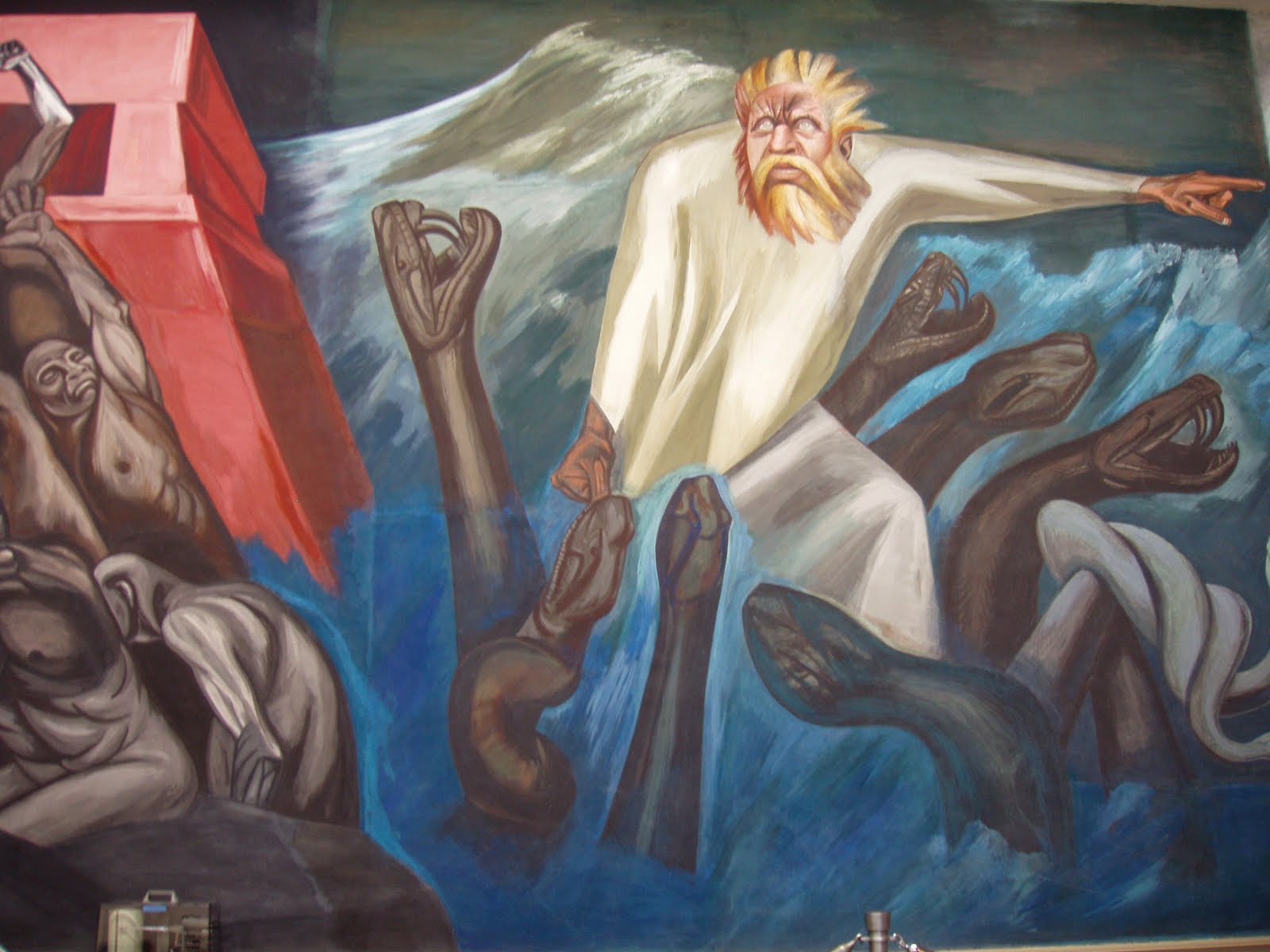
The legend of Quetzalcoatl, that in its latest incarnation appears as a god of white skin, makes me think that the very first feathers for a psychogenic leap were already present in the New World before the arrival of the white man.
___________
The objective of the book is to present to the racialist community my philosophy of The Four Words on how to eliminate all unnecessary suffering. If life allows, next time I will reproduce another chapter. Those interested in obtaining a copy of Day of Wrath may visit: this artcle.
